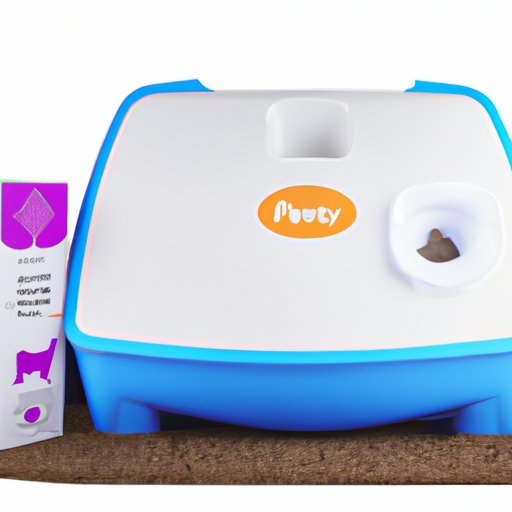Introduction
Cats are wonderful pets, but when they start peeing on furniture it can be quite distressing. Not only is this behavior unpleasant, it can also be difficult to stop. Fortunately, there are a few things you can do to help keep your cat from peeing on furniture.

Provide a Litter Box in the Area Where Your Cat Has Been Peeing
One of the best ways to discourage your cat from peeing on furniture is to provide a litter box in the area where they’ve been doing it. Cats are creatures of habit, and having a litter box nearby will encourage them to use it instead of the furniture.
When choosing a location for the litter box, make sure it’s in a quiet area that is away from any high-traffic areas in the house. You should also make sure it’s easy for your cat to access. If your cat has to jump up or climb over something to get to the litter box, they may not be motivated to use it.

Clean Any Soiled Furniture Thoroughly with an Enzymatic Cleaner
If your cat has already peed on the furniture, it’s important to clean it thoroughly with an enzymatic cleaner. Regular household cleaners won’t remove the smell of cat urine, and cats are attracted to the smell. An enzymatic cleaner, on the other hand, will break down the uric acid crystals in the urine and eliminate the odor.
To properly clean the furniture, first blot up as much of the urine as possible with a paper towel. Then mix a solution of equal parts water and enzymatic cleaner, and apply it to the soiled area. Let the cleaner sit for several minutes before blotting it up with a clean cloth. Finally, rinse the area with cool water and let it dry completely.

Make Sure the Litter Box is Kept Clean and That Your Cat Has Easy Access to It
Once you have a litter box set up, it’s important to make sure it’s kept clean. Cats are notoriously picky about their bathrooms, and if the litter box isn’t clean enough, your cat may be tempted to find another spot to go. Make sure you scoop out the litter box every day, and change the litter completely once a week.
In addition to keeping the litter box clean, it’s important to make sure your cat has easy access to it. If the litter box is located in a difficult-to-reach spot, your cat may not be motivated to use it. Try to put the litter box in a place that is convenient for your cat, such as near a doorway or in a corner.
Feed Your Cat a High-Quality Diet
A poor diet can lead to a variety of health issues, including urinary tract infections, which can cause a cat to start peeing on furniture. To help prevent this from happening, make sure you’re feeding your cat a high-quality diet. Look for food that is high in protein and low in carbohydrates, and avoid foods that contain artificial colors, flavors, or preservatives.
In addition to a high-quality diet, make sure you’re also providing your cat with plenty of fresh water. Staying hydrated is essential for good health, and it can also help prevent urinary tract infections.
Give Your Cat Plenty of Mental and Physical Stimulation
Boredom and lack of stimulation can lead to a variety of behavioral problems, including peeing on furniture. To help keep your cat mentally and physically stimulated, make sure you’re providing them with plenty of activities. Place a scratching post in the area where your cat has been peeing, and offer them toys and interactive games to play with.
You can also give your cat some outdoor time by taking them on walks. This will not only provide them with physical exercise, but it will also give them the chance to explore and experience new sights and smells.
Consider Using a Pheromone Diffuser or Spray to Help Reduce Stress Levels
Stress is one of the most common causes of inappropriate urination, so it’s important to try to reduce your cat’s stress levels. One way to do this is by using a pheromone diffuser or spray. These products release calming pheromones that help reduce your cat’s stress and anxiety levels, making them less likely to pee on furniture.
When using a pheromone diffuser or spray, make sure to follow the directions carefully. In general, diffusers should be placed in the room where your cat spends the most time, and sprays should be used directly on the furniture that your cat has been peeing on.
Conclusion
Dealing with a cat that is peeing on furniture can be disheartening, but there are things you can do to help keep your cat from doing it. Providing a litter box in the area, cleaning soiled furniture with an enzymatic cleaner, and using a pheromone diffuser or spray to help reduce stress levels are all helpful solutions. By taking these steps, you can help keep your cat from peeing on furniture and maintain a peaceful home environment.


